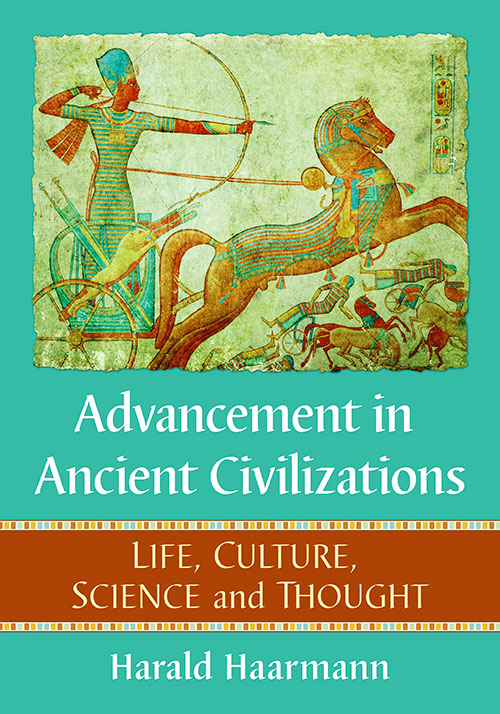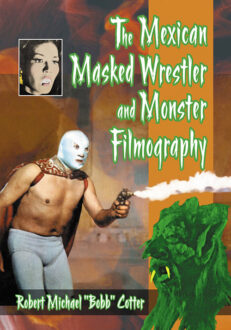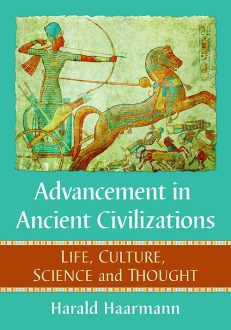Advancement in Ancient Civilizations
Life, Culture, Science and Thought
Original price was: $49.95.$24.99Current price is: $24.99.
In stock
About the Book
Traditional scholarship on how ancient civilizations emerged is outmoded and new insights call for revision. According to the well-established paradigm, Mesopotamia is considered the cradle of civilization. Following the cliché of ex oriente lux (“light from the East”) all major achievements of humankind spread from the Middle East. Modern archaeology, cultural science and historical linguistics indicate civilizations did not originate from a single prototype. Several models produced divergent patterns of advanced culture, developing both hierarchical and egalitarian societies. This study outlines a panorama of ancient civilizations, including the still little-known Danube civilization, now identified as the oldest advanced culture in Europe. In a comparative view, a new paradigm of research and a new cultural chronology of civilizations in the Old and New Worlds emerges, with climate change shown to be a continual influence on human lifeways.
About the Author(s)
Bibliographic Details
Harald Haarmann
Format: softcover (7 x 10)
Pages: 244
Bibliographic Info: 58 photos, bibliography, index
Copyright Date: 2020
pISBN: 978-1-4766-7989-1
eISBN: 978-1-4766-4075-4
Imprint: McFarland
Table of Contents
List of Maps ix
List of Figures x
Introduction: The Organic Whole of Human Existence and the Quality of Life 1
1. The Life Cycle of Cultures: Trajectories of Interaction Between Human Beings and Their Environment 5
Arbitrators of socio-cultural change: The challenge of changing environmental conditions for adaptive skills 5
Climate-induced changes in human ecology: The origins of the Black Sea 10
Environmental ecology and how human beings adapt to local conditions of existence 16
The role of older cultural patterns in the formation process of advanced cultures 18
2. Timeline: The Ancient Civilizations in Light of a Differential Model of Cultural Advancement 23
The Mesopotamian bias and the Greek myth of the German romantics in the early 19th century 23
The significance of the incubation stage for the emergence of advanced cultures 26
3. Early Achievements: Elementary Innovations as the Driving Force of Progress in Technological Domains 39
Prototypes of the plough 39
Pyrotechnology for the production of ceramic ware and prototypes of the potter’s wheel 40
Furnaces and metal-working 41
The ancient traditions of shipbuilding and seafaring 44
4. The Wheel, the Wagon and the Chariot: Dynamics of Technological Transfer in Antiquity 48
The significance of the wheel 49
The impact of steppe people on transport technology and the origins of Indo-European terminology 49
The input of ancient European technology in the context of collaboration with Indo-European pastoralists 51
The advent of wheel and wagon in Mesopotamia 52
The chariot: Technological breakthrough in the Eurasian steppes 52
The absence of the wheel as a practical device in pre–Columbian civilization: A mysterious case of a “missing link” 55
5. The Economic Foundations: Trade Routes, Centers and Networks 58
Trade routes, centers and networks in the commonwealth of Old Europe 61
The movement of trade goods, technological know-how and ideas between Old Europe and Mesopotamia 66
The early network of Middle Eastern trade routes: Sumerian cities interconnected with Dilmun and the Indus Civilization 67
Gift exchange to build trust among trading partners and enhance harmony in social relations 68
Early trading networks in pre–Columbian Mesoamerica: The proliferation of Olmec goods and ideas 70
6. Settlement Planning: From Villages to Urban Agglomerations 72
The model of urbanization evolving from egalitarian villages 72
The model of urbanization in a milieu of stratified society 77
7. Architecture: Houses, Workshops and Temples 81
Houses and forms of accommodation in agrarian communities 83
Sacral architecture 86
Famous temple monuments of antiquity vis-à-vis cultural memory: Between oblivion and iconicity 90
8. Social Networking: Models of Community Life, the Fabric of the Common Good 100
The œcumene model of ancient civilization—The archaeological record 101
The rise of the state model of civilization, associated with social hierarchy and stratified society 105
Socioeconomic models of ancient civilizations in a comparative view 107
9. Religion and Worldview: Anthropomorphic and Zoomorphic Images of the Divine, Sanctuaries and Holy Precincts 109
Archaic forms of spirituality 110
From spirit to female divinity 114
Divinities relating to plant cultivation 119
The personification of individual divine agents and the origins of monumental statuary 123
The emergence of divinities in the context of pre–Columbian civilization 124
Figurines as a lingua franca of ritual life 124
10. Human Activity Between Life and Afterlife: The Intergenerational Chain in Light of Cultural Memory 126
The world of public entertainment: Did the ancient Greeks invent theater? 126
Fashion and dress-codes: Between social constraints and individual choice 130
The place of the dead in cultural memory 136
Connecting with the ancestors in the world of shamanism 138
11. Specialized Systems for Communication: Writing Numbers 144
The beginnings of numerical and calendrical notation 144
Writing numbers in pre–Columbian Mesoamerica and South America 146
Writing numbers in pre–Columbian South America 147
The interrelation of numerical notation and writing: The special case of the Sumerians 149
12. Specialized Systems for Communication: The Visual Recording of Ideas and Writing Language 153
Writing technology and its significance for the construction of civilization 153
Writing systems in the ancient civilizations 158
Writing systems of the Old World 159
Writing systems of the New World (pre–Columbian): The Olmec script (ca. 1500–600 bce) 173
Writing technology as a vehicle of progress 176
13. Intellectual Domains: What Was the Driving Force for Science and How Did Philosophy Originate? 177
Pre-Socratic philosophers as the first to reflect on cosmology and the natural world 178
Picking up the threads: The rope model of repetitive continuity of ideas 184
Philosophy as a tool for rationalizing mythic truths and for organizing community life 185
14. Art and Aesthetics: Artistic Genres in Their Cultural Context 189
The cultural meaning of sculptures in the Old European, Native American and Mesopotamian context 190
Classical Greek philosophy and art: Plato’s concept of aesthetics 192
Ancient civilizations as inspirational sources of modern art 198
Epilogue: Cultural Memory 207
Bibliography 213
Index 229





